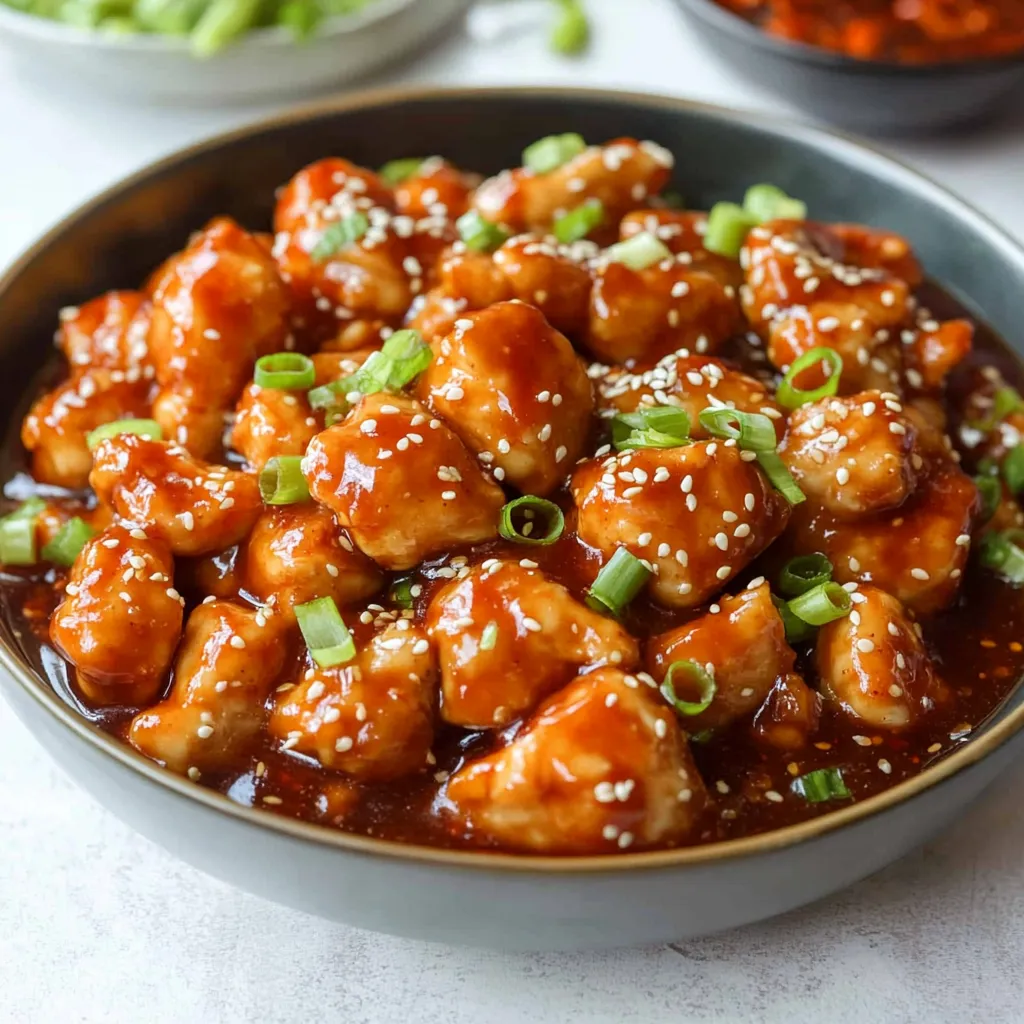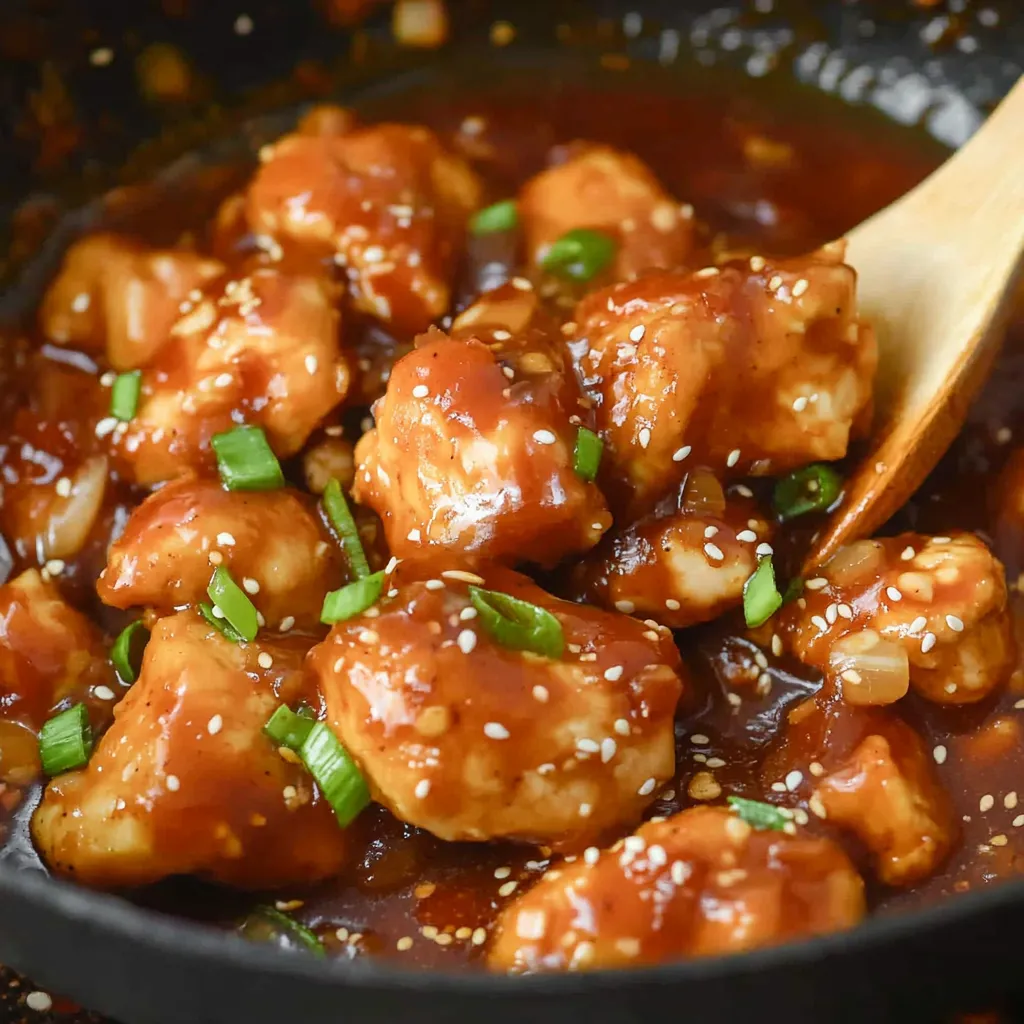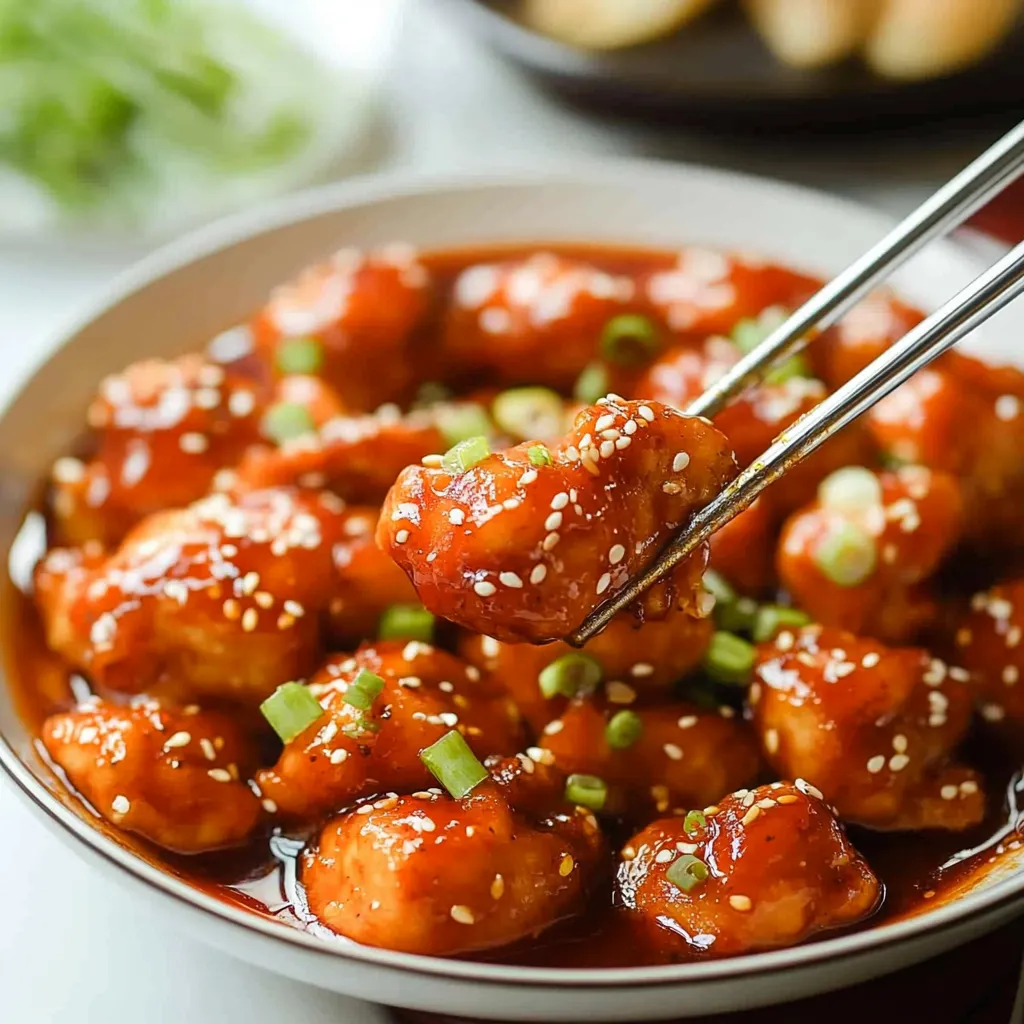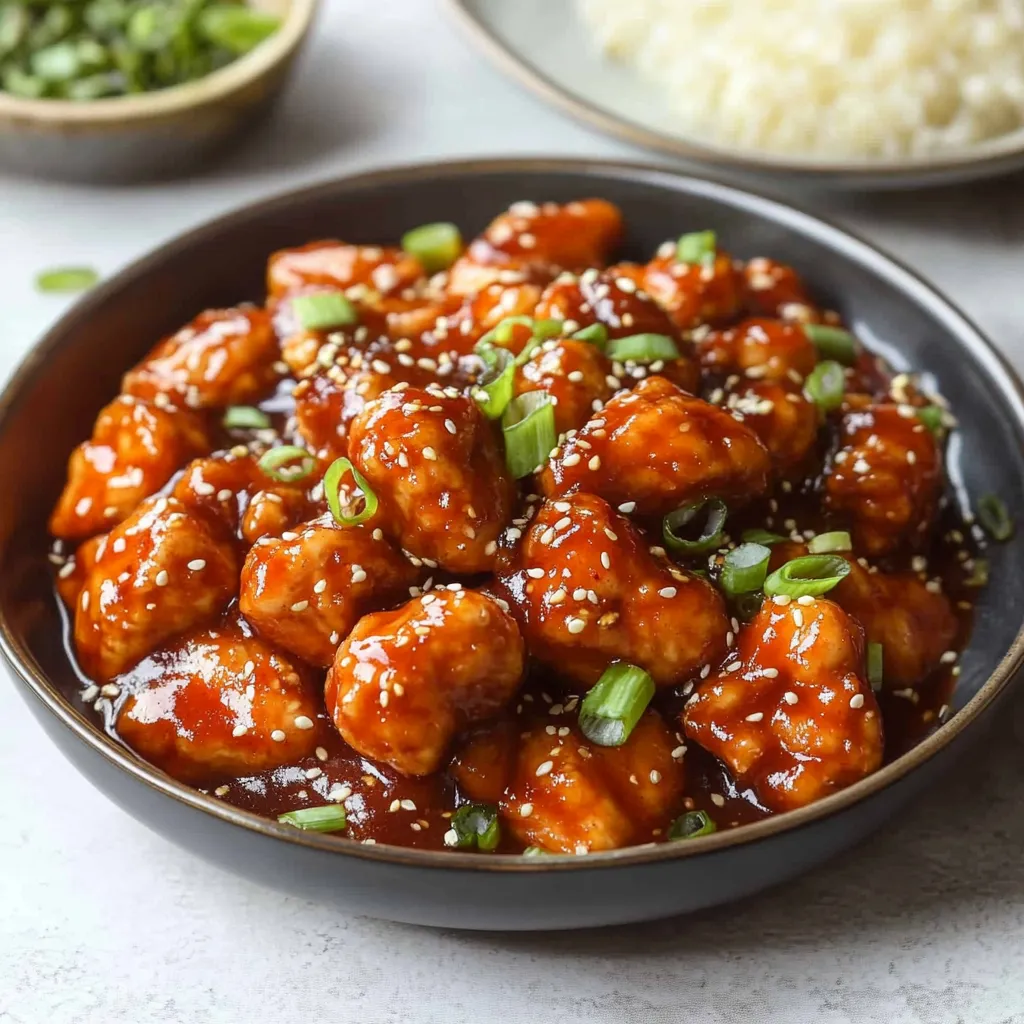 Pin it
Pin it
Picture juicy chicken bits with an irresistible crunch, smothered in a shiny, bright red coating that's both sweet and fiery with deep, rich flavors. This Korean-inspired Gochujang Chicken turns ordinary thighs into a mouthwatering meal that captures Korea's bold taste profile. The chicken stays wonderfully crunchy even after you've added the thick, tasty sauce, giving you that perfect mix of texture and flavor.
The first time I tried cooking with gochujang at home, I couldn't believe how this one ingredient transformed everything. My kids, who used to avoid anything with heat, now beg me to make this chicken every Sunday. The trick isn't complicated - it's all about getting that crunchy exterior and making sure the gochujang's spiciness plays nicely with a touch of sweetness.
Key Ingredients
- Boneless chicken thighs: Go for plump, firm thighs with consistent pink coloring. You'll want dark meat here since it won't dry out during high-temp cooking and tastes way better. Make sure they're cleaned up but not completely stripped of fat - you need some for good flavor and juiciness.
- Gochujang paste: This Korean chili paste makes our sauce special. Pick one with rich red color and thick texture. They come in different heat levels from gentle to super fiery. If you're new to this, start with a milder version. Good paste smells complex with hints of fermented beans and chilies.
- Cornstarch: You'll need smooth, fresh cornstarch to get that amazing crunch. It forms a thin, crispy layer that won't go soggy when sauced. Make sure it's fine and powder-like without any moisture or bumps.
- Neutral cooking oil: Grab an oil that can handle high heat like avocado, grapeseed, or plain vegetable oil. It should smell like nothing so it won't mess with your chicken flavors. Pour enough to make a 1/4 inch pool in your pan.
- High quality soy sauce: Get traditionally brewed stuff with a rich amber look and complex smell. Good soy sauce isn't just salty - it's got depth and character that adds that can't-put-your-finger-on-it deliciousness.
- Local honey: Unpasteurized, raw honey works best here, making your sauce glossy and gorgeous. The natural flowery taste works magic with spicy gochujang while bringing needed sweetness to cool things down.
Extra Flavor Boosters
- Fresh garlic cloves: Pick out solid, weighty heads with snug, unmarked cloves. Nothing dried or pre-minced can match what fresh garlic brings to the party.
- Green onions: Find bright, snappy stalks with vivid green tops. They don't just taste good with their fresh, zingy bite - they also make your dish look fantastic with their pop of color.
- Toasted sesame oil: Your finishing oil should look deep amber and smell intensely nutty. Just a few drops bring authentic Korean flavor to the whole dish.
Cooking Method
- Getting Your Chicken Ready
- Start with chicken that's not cold from the fridge - room temp meat cooks more evenly. Slice thighs into even 1.5 inch chunks so they all finish cooking at the same time. Don't dry the chicken off like most recipes tell you - that bit of moisture actually helps the cornstarch stick better. Take a minute to look through the pieces and trim any big fat pockets, but leave enough for good flavor.
- Making That Perfect Crunchy Coating
- Be exact with your cornstarch - too much makes a gummy mess, too little won't get crunchy. Scatter it over your chicken evenly, then use your hands to lightly work it in, covering every piece. You want a thin, even coating, not clumpy or powdery. Let it sit for 5 minutes so the starch can really stick to the meat.
- Frying Like a Pro
- Get your oil to exactly 350°F - this temp is the sweet spot for golden outside, juicy inside. Test it by dropping in a tiny bit of coating - it should sizzle right away without burning. Cook small batches - crowding the pan ruins crispiness. Every piece needs room to form that perfect crust. Cook for 5-6 minutes per side until they're a rich golden color, tweaking the heat as needed.
- Whipping Up Your Amazing Sauce
- While chicken cooks, start your sauce. First mix gochujang with soy sauce to thin it out, then stir in honey and minced garlic until smooth and slightly thick. In another pan, cook finely chopped onions until see-through to build flavor. Pour in your gochujang mix and let it bubble until it thickens a bit and looks shiny.
 Pin it
Pin it
Nailing the Ideal Sauce Texture
Look for the right signs in your sauce - it should stick to the back of a spoon and slowly drip off. Run your finger through it and if it leaves a clear path that holds its shape, you've got it right. This thickness means it'll coat your chicken perfectly without making it soggy.
I started playing with gochujang recipes in my cramped first apartment, testing different heat levels and sauce combos. I've learned that medium-hot gochujang gives the most crowd-pleasing result that everyone can enjoy. The way the sauce gets slightly caramelized on the crispy chicken reminds me of watching street food vendors cooking in Seoul.
Plating Your Masterpiece
Build your dish with intention - first a fluffy bed of steamed rice, then arrange your glazed chicken pieces thoughtfully on top, finishing with a sprinkle of sliced green onions and toasted sesame seeds. This careful presentation makes every bite more enjoyable.
 Pin it
Pin it
Keeping Everything Just Right
Timing makes all the difference here. Keep your first batches of chicken warm in a 200°F oven while you finish the rest. This keeps everything crispy without overcooking. When it's time for the sauce, work fast to coat all pieces evenly while everything's hot and the sauce flows smoothly.
Saving Leftovers
Keep any extra chicken and sauce in separate containers. When you want to eat it again, warm the chicken on a wire rack in a 350°F oven until hot and crispy, then toss with reheated sauce. Don't use the microwave - it'll ruin that awesome texture you worked for.
 Pin it
Pin it
Frequently Asked Questions
- → What does gochujang taste like?
- It's a red chili paste from Korea with a mix of sweet, spicy, and savory flavors. You’ll spot it in Asian markets or most big grocery stores.
- → How can I make it less spicy?
- Cut back on the gochujang and add a dash more sugar to keep the sweetness in balance.
- → What goes well with this dish?
- It’s great paired with veggies and steamed rice or served Korean-style with side dishes like kimchi.
- → Can I use chicken breast instead?
- Absolutely. Chicken breast works too, but keep an eye out so it doesn’t overcook and get dry.
- → How should I store leftovers?
- Keep them in a sealed container in the fridge for up to 3 days. Reheat in a pan for the best texture.
